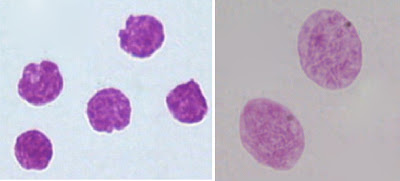The first diploid human genome sequence, and the first truly complete sequence from a single individual — notably but perhaps not surprisingly Dr. J. Craig Venter — is now available. The paper describing Dr. Venter’s genome (which has been labeled “HuRef”) is published in the open access journal PLoS Biology, so feel free to take a look.
Previous sequences for the “human genome” represented composites from multiple individuals [Whose genome?] and were haploid. As a result, it was not possible to determine the extent of intragenomic variation or the degree to which the two copies of a genome in a diploid organism — one derived from the father, one from the mother — interact with one another. The availability of this new sequence opens several new possibilities for detailed analysis, in addition to ushering in the era of personal genomics.
Each time we peer deeper into the human genome we uncover more valuable insight into our intricate biology. With this publication we have shown that human to human variation is five to seven-fold greater than earlier estimates proving that we are in fact more unique at the individual genetic level than we thought. It is clear however that we are still at the earliest stages of discovery about ourselves and only with additional sequencing of more individual genomes will we garner a full understanding of how our genes influence our lives.
Dr. James Watson, co-deducer of the double helix structure of the DNA molecule and Nobel Prize winner, also had his genome sequenced this year.
I would be happy to donate a sample of DNA if they need a third genome for comparative analysis. I note that my genome, or at least pictures of my nuclei, has been published before:
As a side note, Heather Kowalski at the JCVI has provided a superb example of an informative and effective press release.



What next? Maybe sequencing Venter’s parents, to see the block structure of a single inheritance event and assess the contributions of de novo mutations?
Maybe sequencing Venter’s parents
I love this idea. We could identify exact crossover breakpoints! Does Dr. Venter have any siblings?
i really dont know wat this is but i wanted to leave a comment…..